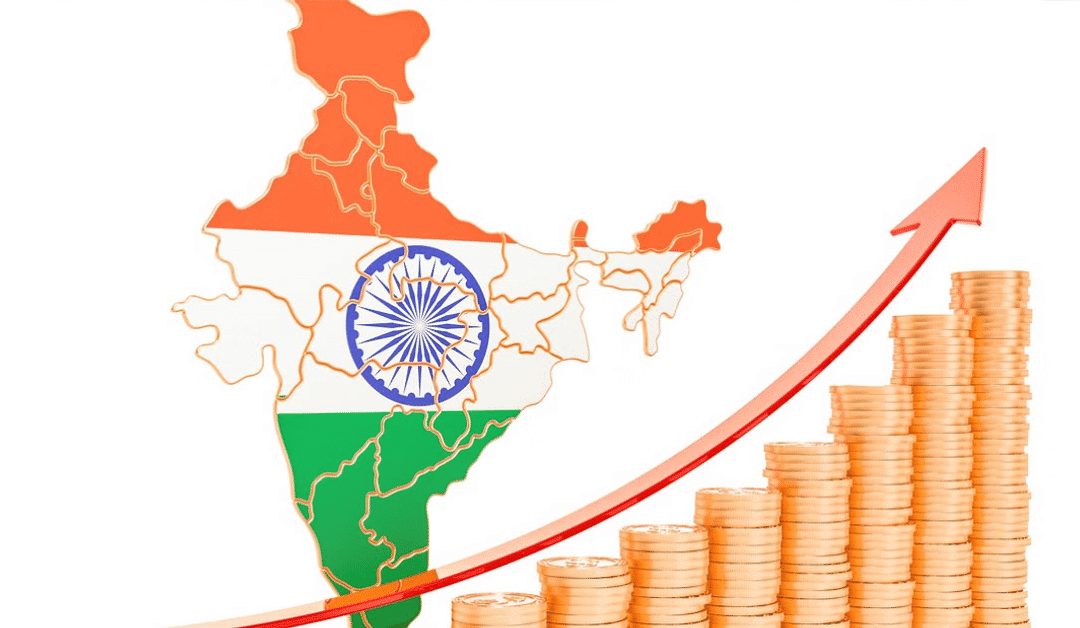India’s economic rise has been nothing short of extraordinary. In 1990, the country ranked as the 12th largest economy in the world. Over the decades, its rapid industrialization, digital transformation, and policy-driven growth helped it climb the ranks, securing the 9th position by 2020 and the 5th by 2023. Now, India is on track to surpass both Japan and Germany to become the third-largest economy by 2028, with its GDP projected to reach $5.7 trillion.
India’s economic trajectory has outpaced many global counterparts, driven by strong domestic demand, favorable demographics, and progressive government policies. This milestone would place India just behind the U.S. and China, reinforcing its role as a major global economic powerhouse.
Key Factors Driving India’s Growth
Several critical factors are fueling India’s accelerated economic expansion:
1. Favorable Demographics and a Growing Workforce
With a median age of around 28 years, India boasts one of the youngest populations in the world. This demographic advantage provides an abundant workforce and a rapidly growing consumer base, creating a strong foundation for sustained economic growth.
2. Economic Reforms and Policy Initiatives
The Indian government has introduced a series of structural reforms to enhance economic efficiency and attract foreign investments. Policies such as:
- Make in India – Encouraging domestic manufacturing and reducing reliance on imports.
- Digital India – Expanding internet penetration, digital infrastructure, and fintech solutions.
- PLI (Production Linked Incentive) Schemes – Boosting local production in key sectors, including electronics, automobiles, and pharmaceuticals.
3. Infrastructure and Industrial Growth
Massive investments in roads, railways, airports, and smart cities have fueled industrialization and improved connectivity. The government’s focus on enhancing logistics and supply chain efficiency has made India a more attractive destination for global businesses.
4. Booming Startup and Entrepreneurial Ecosystem
India has become a global hub for innovation and startups, ranking third in the world in terms of unicorn companies. With strong backing from venture capital firms, an expanding digital economy, and increasing internet penetration, sectors such as e-commerce, fintech, and AI-driven solutions are experiencing exponential growth.
5. Global Investment and Trade Expansion
Foreign direct investment (FDI) inflows into India have steadily increased as global companies recognize its potential as a high-growth market. Trade partnerships, supply chain diversification, and geopolitical shifts have further strengthened India’s position in global trade.
Future Economic Projections and Scenarios
India’s economic future is modeled across three potential growth scenarios:
- Bear Scenario – GDP reaches $6.6 trillion by 2035, growing at a moderate pace.
- Base Scenario – GDP expands to $8.8 trillion, supported by consistent policy execution.
- Bull Scenario – GDP surges to $10.3 trillion, driven by aggressive reforms and high productivity.
India’s GDP per capita is also expected to rise significantly, increasing from $2,500 in 2023 to between $4,247 and $6,706 in the coming decade. This will lead to higher living standards, increased consumer spending, and a more robust middle class.
India’s Growing Role on the Global Stage
As India cements itself as the third-largest economy, its influence in global financial and trade institutions will rise. Some key implications include:
- A stronger voice in global policymaking bodies like the IMF, World Bank, and G20.
- Increased demand for Indian exports, especially in technology, pharmaceuticals, and IT services.
- Higher foreign investment inflows, positioning India as a manufacturing and supply chain hub.
Challenges and the Road Ahead
While India’s growth story is promising, several challenges remain:
- Job Creation: Ensuring employment generation keeps pace with the growing population.
- Income Inequality: Addressing the wealth gap between urban and rural regions.
- Energy and Infrastructure Development: Managing sustainable growth while balancing energy demands.
By focusing on inclusive policies, technological advancements, and sustainable economic strategies, India can continue its trajectory toward becoming a dominant global economic force.

